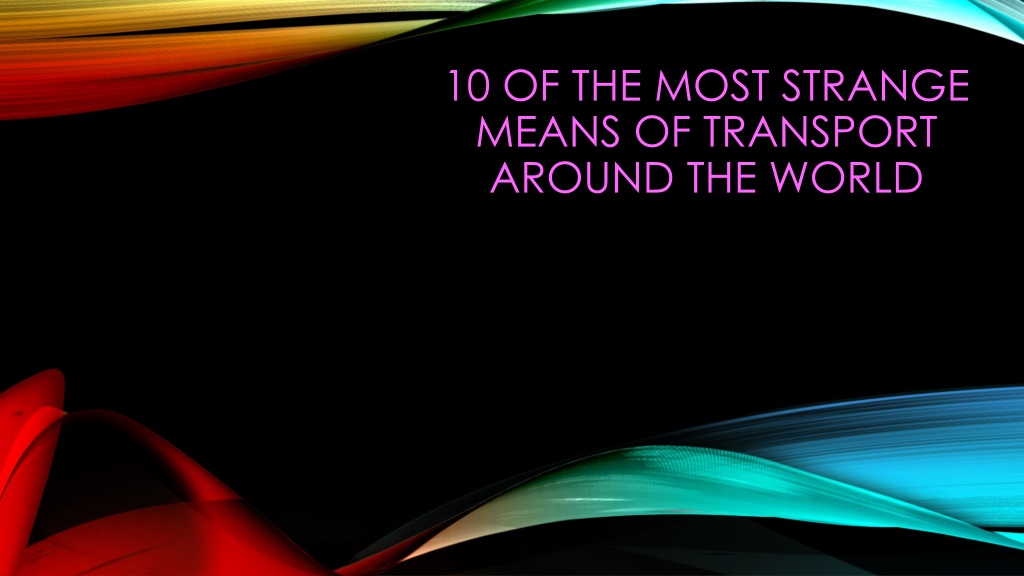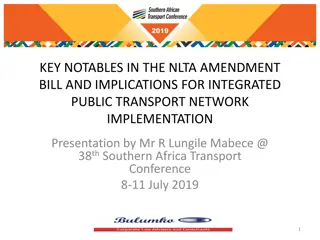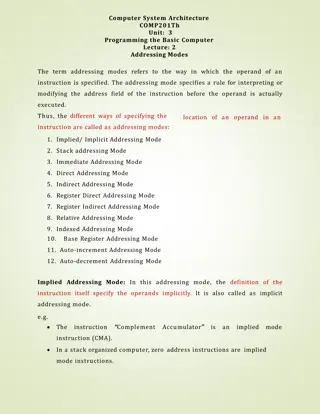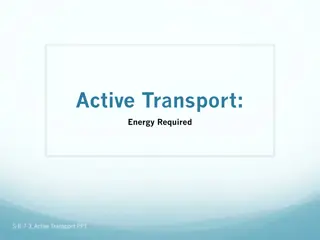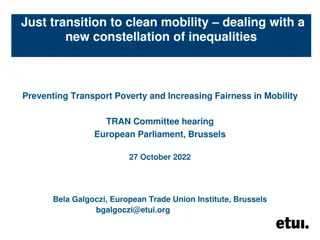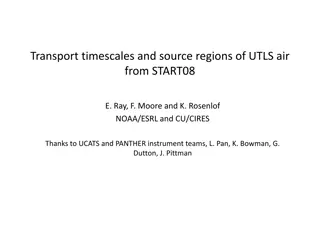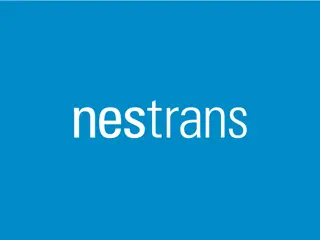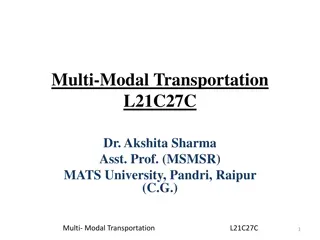Unique Modes of Transport Around the World
Explore some of the most unusual means of transportation globally, including a prototype bus in China that passes over cars, an Amfibus in the Netherlands running on land and water, an inverted aerial train in Wuppertal, Germany, the futuristic Shanghai Maglev train in China, and the traditional Monte toboggans in Madeira. Also, discover the iconic Jeepneys in the Philippines, known as the undisputed kings of the road.
Download Presentation

Please find below an Image/Link to download the presentation.
The content on the website is provided AS IS for your information and personal use only. It may not be sold, licensed, or shared on other websites without obtaining consent from the author. Download presentation by click this link. If you encounter any issues during the download, it is possible that the publisher has removed the file from their server.
E N D
Presentation Transcript
10 OF THE MOST STRANGE MEANS OF TRANSPORT AROUND THE WORLD .
Prototype bus in China HONG KONG, congested and polluted? Try designing a vehicle that takes up no road space. And make it partly solar powered. W What do you do if your roads are With this prototype bus, the Chinese have found a solution to reduce traffic on the roads. This vehicle passes over cars on the main roads of China to transport its passengers and thus the traffic of cars is greatly reduced.
Amfibus Netherlands The Amfibus is a versatile transport vehicle that can run on water and on land. It has a capacity of 50 people and is a popular attraction in the Dutch city of Rotterdam. Amfibus
Wuppertal's Inverted Aerial Train (Germany) In Wuppertal, Germany, there is another "upside down" train. It runs for 13.3 kilometers and has 20 stations. The train may look futuristic, but it has been in operation for over a century. A journey on the line from start to finish takes about 30 minutes. The train passes over the Wupper River, a tributary of the Rhine and also over a road that runs along the river valley. It was originally created to unite the cities of Elberfeld and Barmen from the amalgamation of which together with others, Wuppertal was created in 1929, which received the aerial railway as a dowry. It is the oldest electric elevated railwwith hanging cars in the world.
The Shanghai Maglev (China), the train of the future While French high-speed trains run at around 320 km/h, the Shanghai Maglev (magnetic levitation train) reaches 431 km/h. The train literally levitates above the rails and travels almost 30 km in seven minutes. And with its ultra-modern design, you would think that it had come straight out of a science fiction film. The next models will make it possible to travel from Beijing to Shanghai in two and a half hours. That s faster than the plane!
Monte toboggan, Madeira Monte toboggans came to being in the 19th century, as a fast way of getting down the hill from Monte to Funchal. Today, they're more a tourist attraction than an everyday mode of transport for the locals. Pick up a toboggan at the bottom of the stairs leading to the Nossa Senhora do Monte Church. Once you've climbed into the wicker sledge, two drivers dressed in traditional white outfits will steer you down the narrow, winding streets to Funchal at up to 48km/h. It's an extraordinary and exhilarating experience.
Jeepney, Philippines Known as 'the undisputed king of the road' in the Philippines, the Jeepney is a mammoth vehicle. When the American troops pulled out of the Philippines at the end of World War II, surplus jeeps were gifted to the locals and this is how the original jeepneys came to being. The Filipinos stripped them down, added roofs for shade and used them to re-establish public transport in the country. Nowadays, brightly decorated jeepneys are a symbol of Philippine culture and the most popular way of getting around in the country.
Barco de Totora, Peru Caballitos de totora are reed watercraft used by fishermen in Peru for the past 3000 years, archaeologically evidenced from pottery shards. Named for the way they are ridden, straddled ('little reed horses' in English), fishermen use them to transport their nets and collect fish in their inner cavity. The name is not the original name, as horses were not introduced to South America until after the Spanish conquest of the Inca Empire. The ancient Mochica name of the watercraft is t p. They are made from the same reed, the totora (Schoenoplectus californicus subsp. tatora), used by the Uru people on Lake Titicaca, and considered part of the Peruvian's National Cultural Heritage since 2016
Trishaws in Malacca For such small vehicles, you can see and hear Malacca s trishaws from surprisingly far away. While pedal- powered rickshaws dwindled across Asia decades ago, in this Malaysian city they re rolling strong thanks to social media, with its pimped-out versions becoming an Instagrammable favorite. Decorated by neon lights, plastered in cartoon designs, and pumping music from stereos, they re like mobile nightclubs.
Party bike, Netherlands A party bike, conference bike, fietscaf , bierfiets, beer bike or bar bike is a multi- passenger human powered vehicle that is powered by the passengers. Human- powered party bikes have grown into several families of vehicles for a variety of purposes, including tourist rentals and private touring.
Coco Taxi, Cuba Coco-taxi is an auto rickshaw-type taxi vehicle in Cuba designed and invented by the Valencian polymath Jos Burgal Murciano. Once the design was approved, he showed how to make it with the plans and all the necessary information so that it could be made in Cuba.[citation needed]The use of the coconut taxi by Cuba began in Havana at the end of the 1990s. It was initially thought of as another means of transporting tourists. The coco-taxis are mainly found in the cities of Havana, Varadero and Trinidad. They generally carry two or three passengers in bucket-style seats set just behind a driver. The frame sits on three wheels, with a fiberglass body and a two-stroke engine. The name for the vehicle comes from the word coco, which means coconut. The shell of the body is yellow and is typically round, giving it the appearance of a half-coconut. The business is not run by companies, but rather individual people just trying to make a living, leading to them usually costing less than regular taxis.
